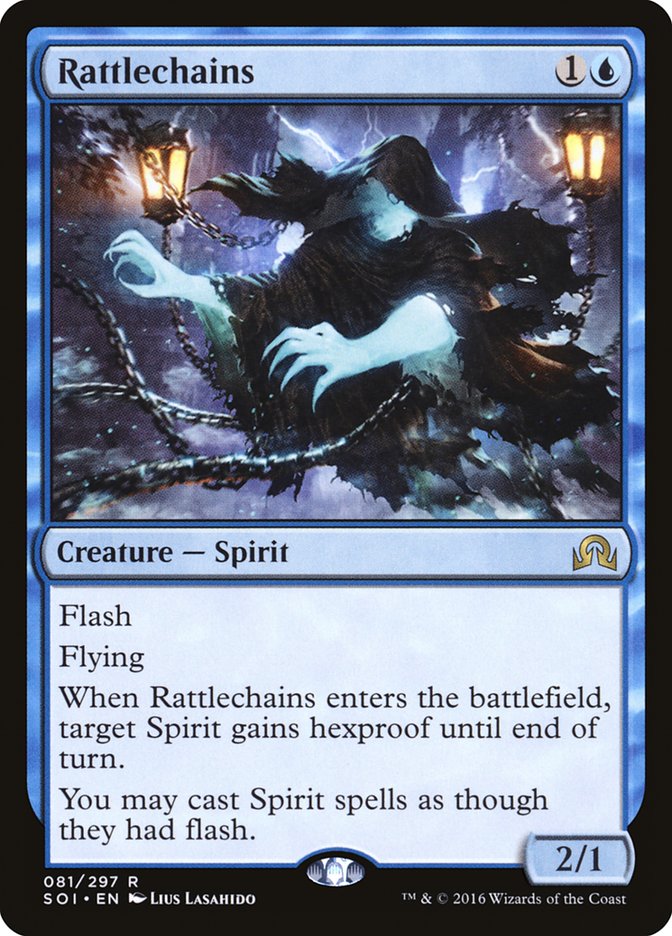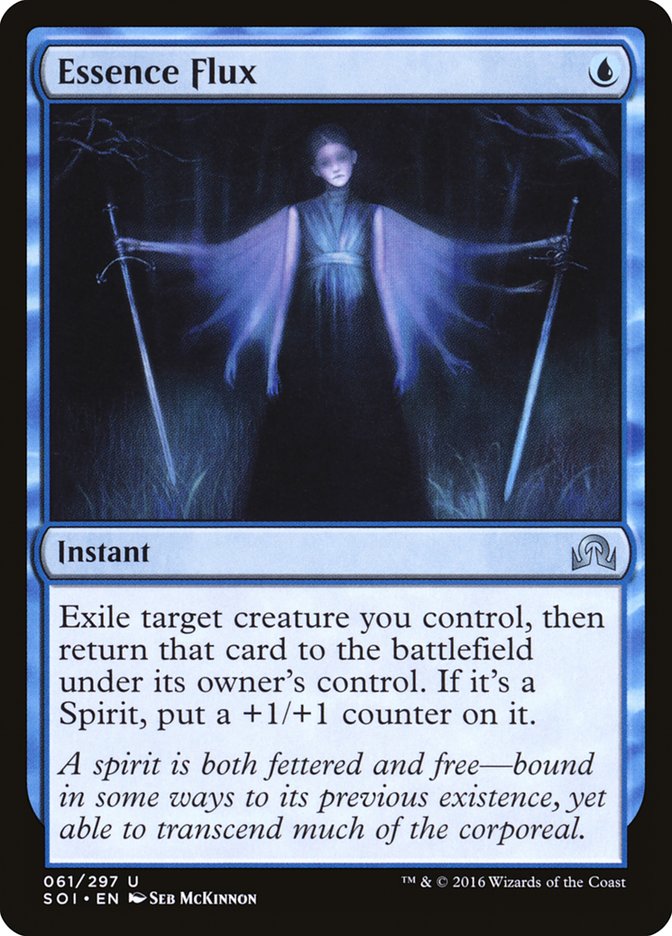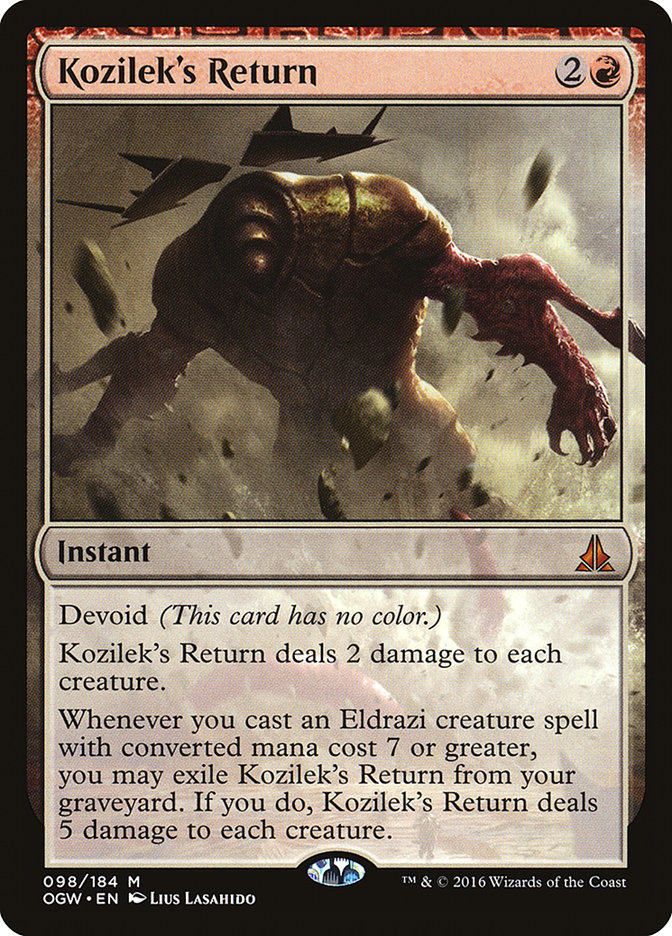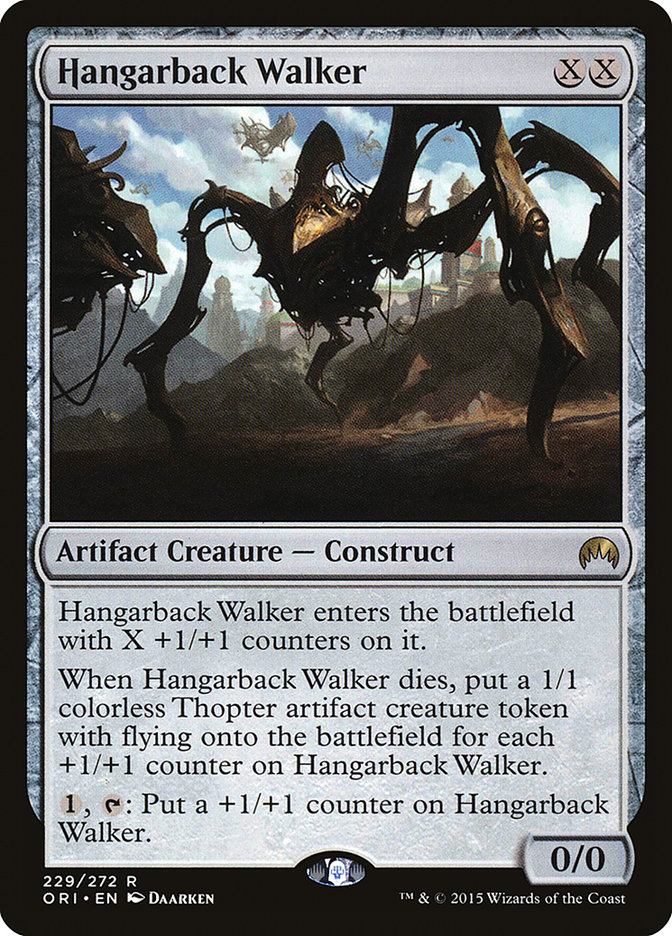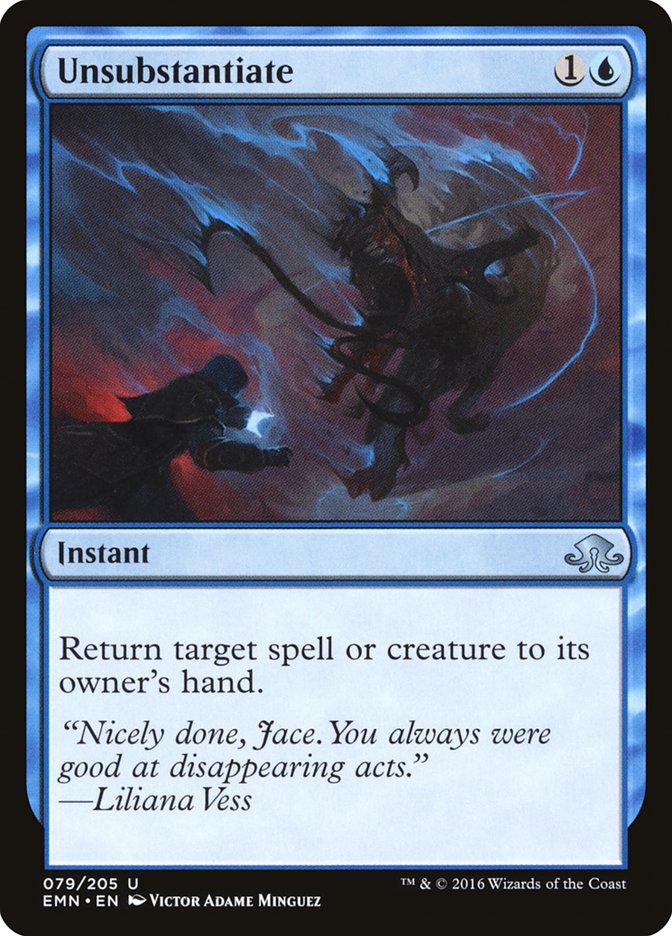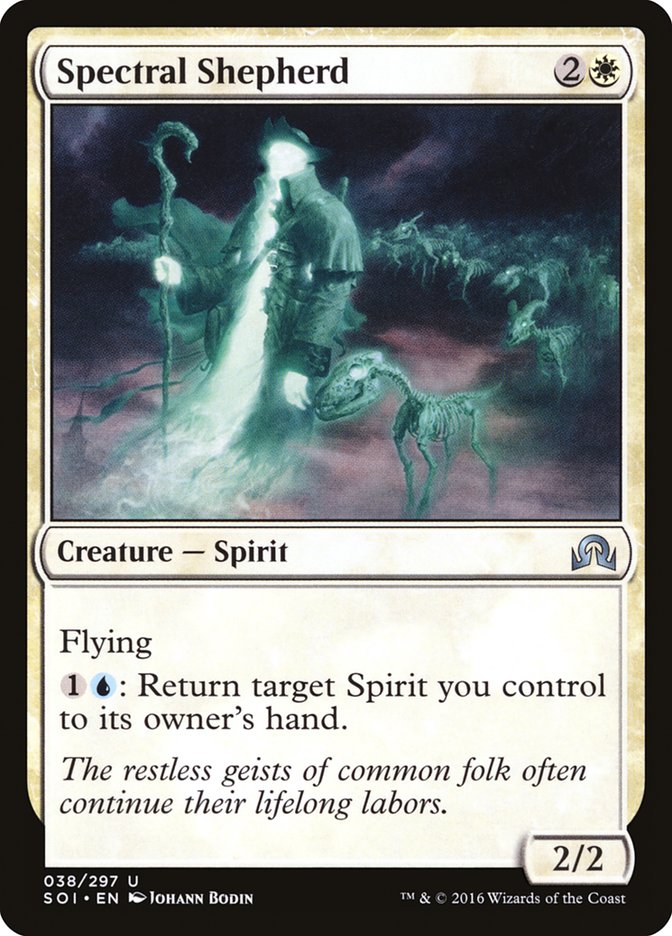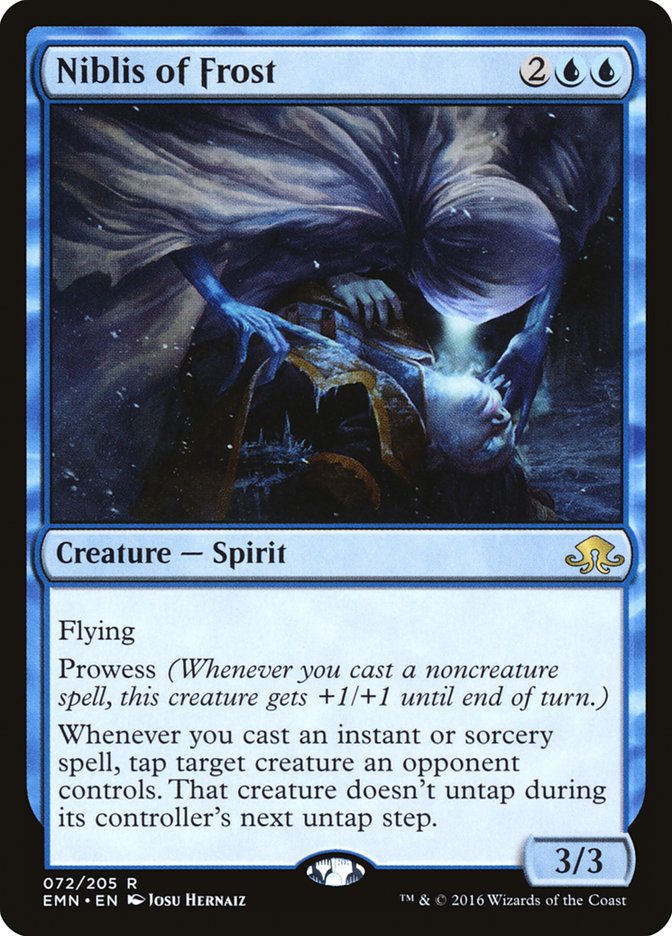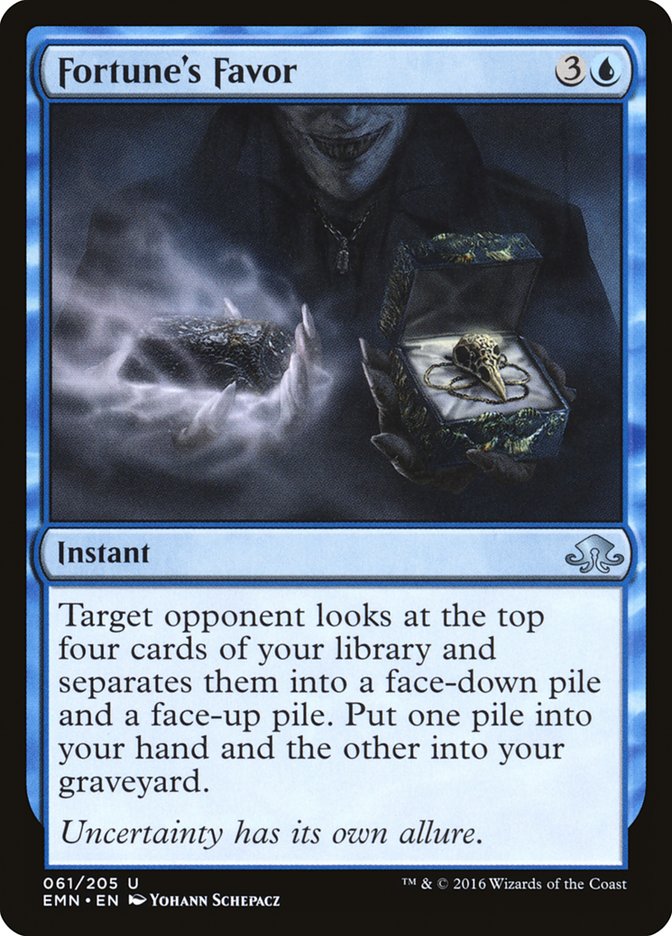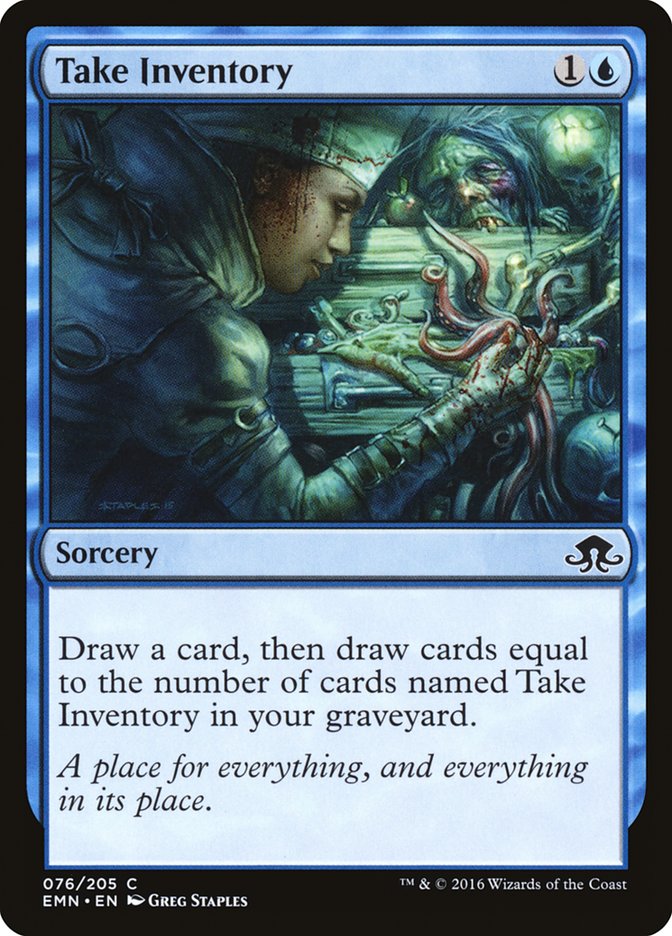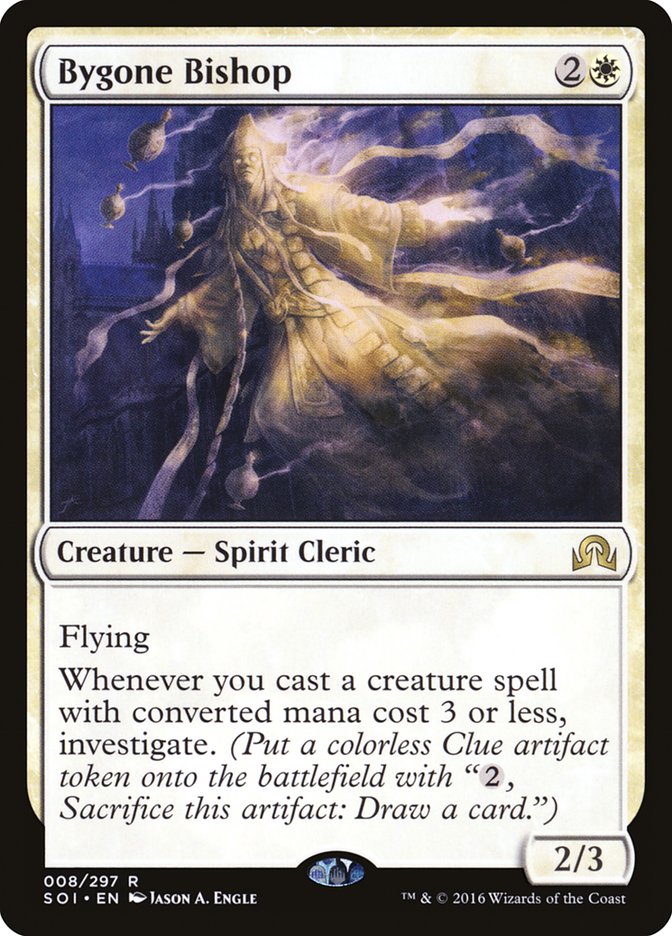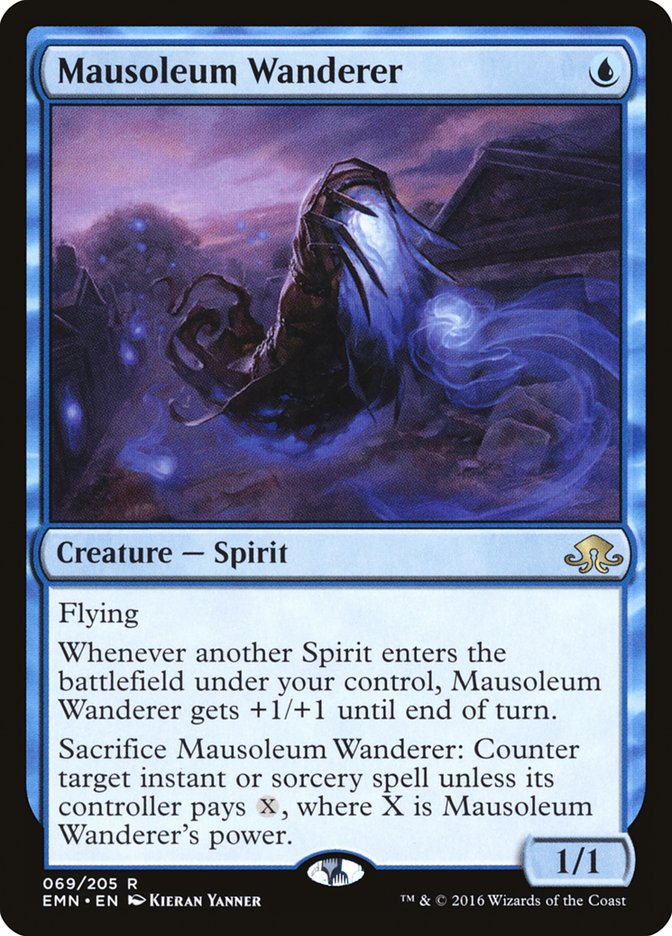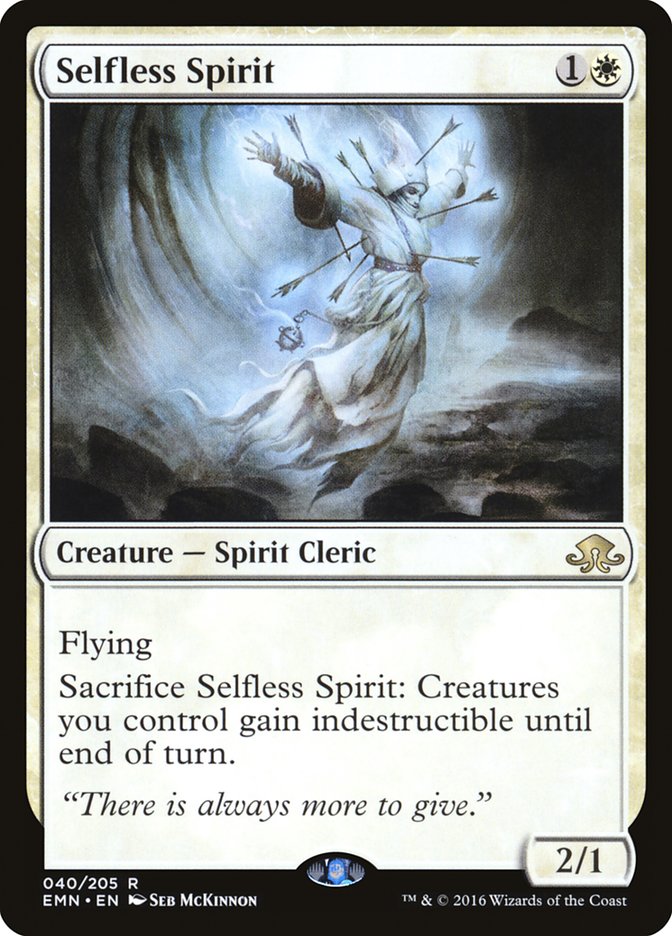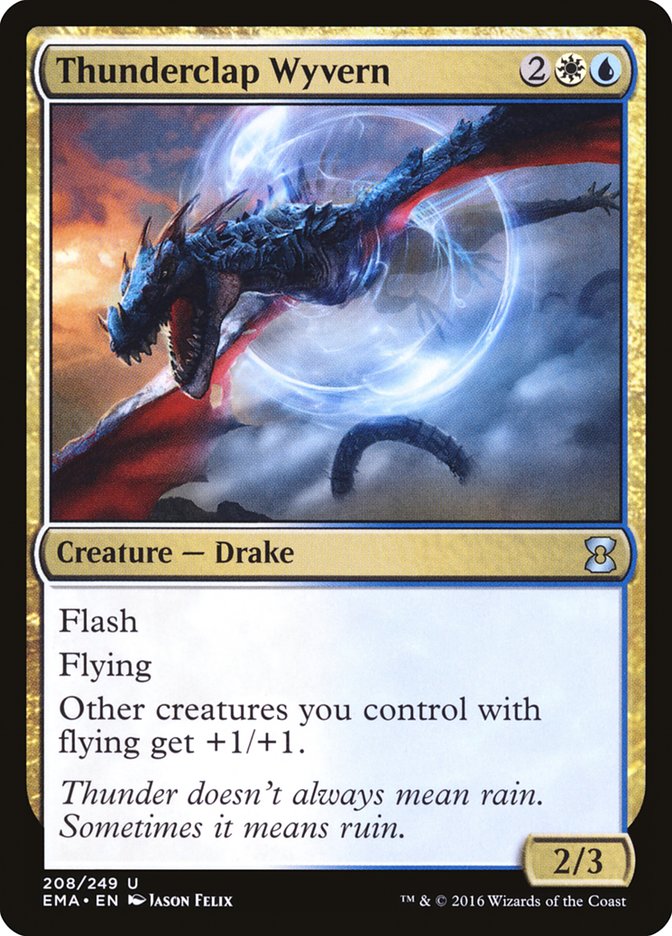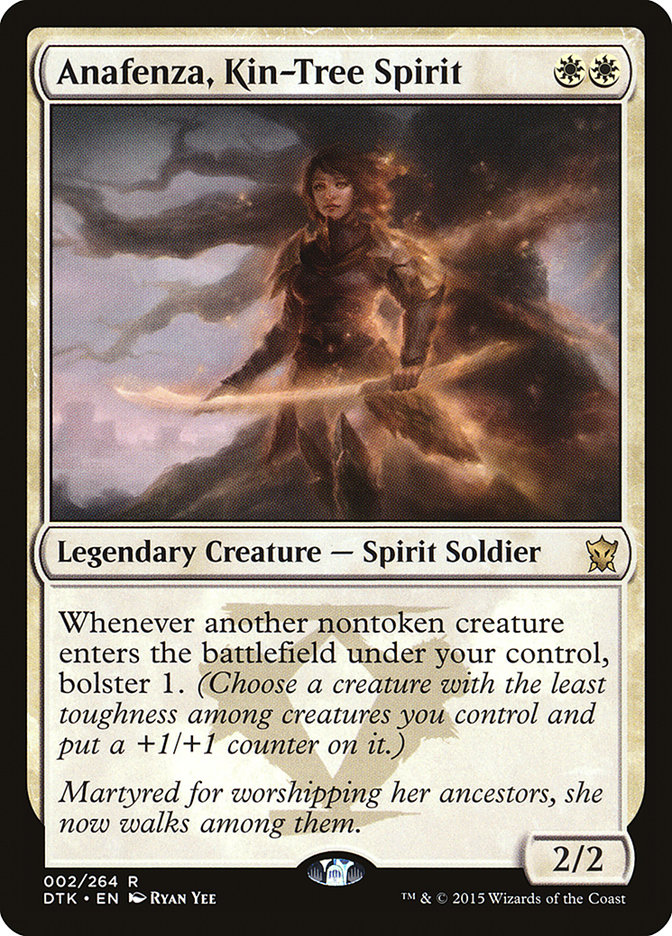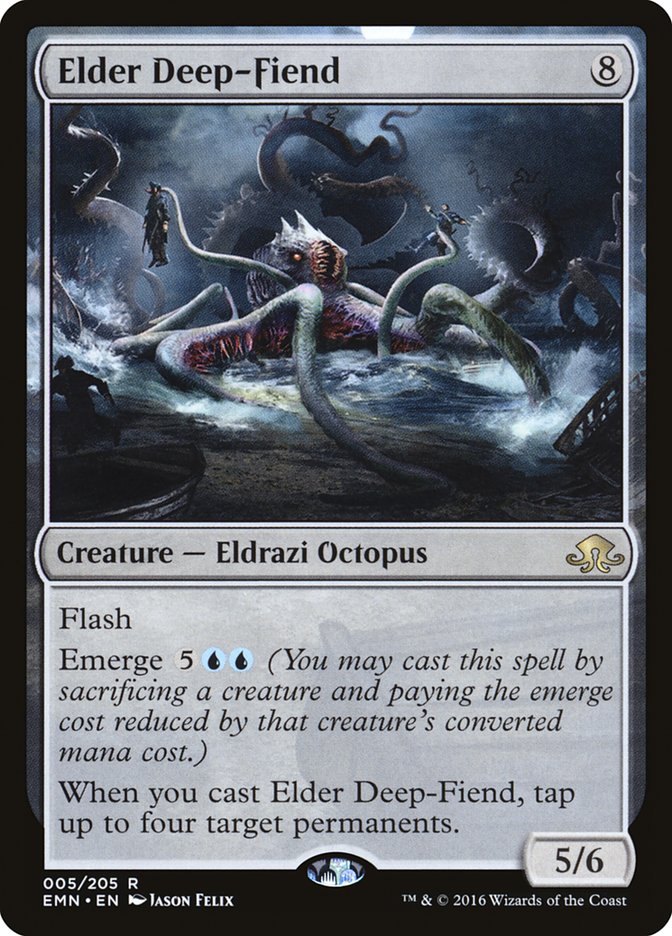Now that we’ve got the full Eldritch Moon spoiler, it’s time to get down to business.
This set suggests enough new support to fully flesh some of the tribal and linear themes hinted at in Shadows over Innistrad. Based on Wizards R&D members’ Twitter comments, they certainly seem to believe some of them are going to get there for Constructed. Which ones? Well, that’s up to us to figure out, and these lists aren’t going to tune themselves.
Besides, there are some radically different ways to build these tribal decks. The key is that we can get paid off for the tribe without having to be all-in. This makes for a much greater variety of possible builds, since we can hybridize the linear strategies with more robust ones.
As a refresher, “linear” strategies are ones that get rewarded the more go in a particular direction (the further you go down that line, if you will). For instance, a deck that has multiple cards that give Goblins +1/+1 and a card that can sacrifice Goblins to deal damage is said to be a linear deck. In general, every Goblin is better in such a deck than it would be in most other decks, and every Goblin we add tends to make the cards that work well with Goblins even stronger.
All-in linear strategies emerge most when all the cards are very cheap, the mana consistent, and the need and desire for interaction low (unless the linear has built-in interactive elements). While Goblin King usually doesn’t get played in decks with a lot of non-Goblins, not every cards that promotes a linear strategy puts as much pressure on us to go all-in.
For instance, my first take on Spirits takes advantage of the Spirit creature type multiple ways but plays just twelve Spirits alongside eight non-Spirits.
Creatures (20)
Lands (24)
Spells (16)

This is a true U/W Flash deck that seeks to play at instant speed, emphasizing tempo and fliers. The first big payoff for Spirits we’re playing is Rattlechains:
Rattlechains has already been seeing an increasing amount of usage as a 2/1 flash flier that occasionally protects another Rattlechains from a removal spell. The card has a great rate (as evidenced by how many people play it without even getting to use either of its two tribal abilities). The biggest thing holding it back from widespread mainstream use has been the lack of good Spirits.
It’s over for that.
This card is so sick. It’s kind of crazy to see such a sick 2/3 tempo creature with an enters-the-battlefield trigger for 1UW in the same format as Reflector Mage, but this is the world we live in. Let’s break this card down so we can get a good feel for why this card is such a big deal.
To start with, it’s a 2/3 flash creature for three. That’s already not actually that far off. A 2/3 flash creature for UW would be a serious consideration for tournament play. Just think about how great that set of stats on a flash creature is against 2/1s for one, or against planeswalkers, against sweepers, whatever. Just look at how many people are playing 2/1 flash fliers without being able to use their other abilities!
Oh, that’s right. Spell Queller flies, too.
Ok, so we’re up to a 2/3 flash flier for 1UW. We’re already up to “good Draft uncommon” levels of rate, but we’re going to need just a little more if we’re going to actually want something like this for Constructed.
“When Spell Queller enters the battlefield, exile target spell with converted mana cost 4 or less.
When Spell Queller leaves the battlefield, the exiled spell’s owner may cast that card without paying its casting cost.”
OMG!
Are you serious right now? This is the ability we’re paying half a mana for? We can flash Spell Queller down to delay our opponent’s spell until Spell Queller leaves the battlefield? Yes, they tend to get the spell eventually, but how many turns of delay do you need to make half a mana worth it?
Let’s say our opponent casts Collected Company on our end step. We Spell Queller it. They untap and then Reflector Mage our Spell Queller (which is a pretty strong response, as far as follow-ups to Spell Queller go). Now, they get the Company, but they lost a full attack and are tapped out on your turn. That’s not a bad use of half a mana.
Sometimes, throwing off the sequencing of spells can be unnaturally disruptive. For instance, if our opponent casts Explosive Vegetation on turn 4, they are looking at a pretty dope turn 5. However, if we Spell Queller it, we’ve basically set them back two turns. Spell Queller is naturally well-built for fighting Kozilek’s Return, but even when they finally get up to enough mana to cast a seven-drop Eldrazi to trigger the five-damage half, the Explosive Vegetation has lost some of its punch. Yes, they still care, but Explosive Vegetation on turn 7 is way less scary than turn 4.
Speaking of Kozilek’s Return, a cool feature of Spell Queller against the Return is that, if we’re able to exile it, we don’t have to fear it getting triggered back by World Breaker or anything. I wouldn’t be surprised if ramp decks start to use more Fiery Impulses to help fight back against Spell Queller.
While delaying ramp spells is disruptive, there are some cards that are just about worthless when Quelled. Imagine someone tries to Negate one of your spells and you respond with a Spell Queller. Now, if the Spell Queller dies in combat or gets bounced by a Reflector Mage, their Negate is wasted. You do have to be careful, though, because if they Fiery Impulse your Spell Queller when you have another sorcery or instant on the stack, they can put that Negate to good use after all.
Now imagine targeting Hangarback Walker.
When Hangarback Walker is cast for two or four mana, it can be Quelled. If and when it comes back, X will equal zero(!)
While delaying spells is Spell Queller’s primary role, it’s going to counter an awful lot that never end up getting cast. Remember, if you win the game with one or more Spell Quellers on the battlefield, you beat the system. They lost a card and a lot of mana. Mystic Snake was a tournament card at four mana for a 2/2. To get a bigger Mystic Snake with flying for just three? You really did it.
We haven’t even gotten into the abusive Spell Queller combos yet.
Essence Flux is the other Spirit-matters payoff, but there’s a decent chance we’d play all four even if it didn’t get a bonus +1/+1 counter to any Spirit it blinks.
Essence Flux is an incredibly versatile card:
● Save a creature from removal.
● Speed up the clock because of the +1/+1.
● Break creature standoffs, since a 3/4 Spell Queller can attack into a 2/3 Spell Queller.
● Untap a creature to block with that also attacked.
● Perhaps, most importantly, re-trigger an enters-the-battlefield ability.
Reflector Mage was already a bomb enters-the-battlefield ability to re-trigger (driving opponents nuts). Now we can re-trigger Spell Queller to keep the Time Walks coming. They do get the original card that was exiled; however, as we’ve already seen, this is no guarantee it will be good. Besides, even if you are just moving the delaying around, that can be even more tempo.
Imagine you originally exiled a Sylvan Advocate, and now, two turns later, are hitting a Collected Company. Yes, they do get the Sylvan Advocate, but they just spent four mana and wanted a Collected Company! Your Spell Queller is even a 3/4, now!
Essence Flux can also be used on Spell Queller when the exile ability is on the stack. Spell Queller is worded like an Oblivion Ring (not Banishing Light). This means the exile ability is separate from the returns from exile ability. If they Explosive Vegetation and you Spell Queller it and Essence Flux it, in response, you’ll end up with a ¾ flier and their Explosive Vegetation will be exiled forever. Blinking the Spell Queller makes the play from exile ability go on the stack, but without having had a chance to exile the spell, yet, there’s nothing to play. Then, when you resolve the first ability, the card is gone for good. Even if your opponent tries to kill the Spell Queller in response to its ability, that spell is gone.
Playing Unsubstantiate on your Spell Queller in response to its exile ability works the same as the Essence Flux trick; except instead of a ¾ flier on the battlefield, you’ve got a Spell Queller in your hand again, which might be exactly what you want.
Unsubstantiate is one of my favorite cards in Eldritch Moon. Some people love it so much they’ll probably put it places it doesn’t belong. Other people hate it, comparing it Remand (which is an overpowered card), despite the fact that half the power of the card is it’s use as an Unsummon. I love how versatile the card is, and how much it rewards you for clever lines of play, while being inherently inefficient if used as a blunt instrument.
With cards like Reflector Mage and Spell Queller, Spirit decks are well-served to try to play a tempo-based game. Sometimes, when you’re behind, you can throw some cards away to try to catch back up. If you get ahead, there are a lot of cards you can use as “Time Walk” in order to put opponents away before your advantage dissipates.
Here’s a line of play to demonstrate the sort of intricate sequencing mixed with high-tempo plays that’s going to make this strategy so brutal to play against.
1. Let’s say our opponent tries to play a Thunderbreak Regent and we Essence Flux our Spell Queller that was exiling a Hangarback Walker.
2. Our opponent tries to Fiery Impulse our Spell Queller in response, since it’ll be a 3/4 when it comes back, if they let the Essence Flux resolve.
3. We Essence Flux our Spell Queller again, but this time, instead of targeting the Thunderbreak Regent (or Fiery Impulse), we target our other Essence Flux, that was going to fizzle. We could just want to hit the Thunderbreak Regent, but imagine if we have a Reflector Mage and Unsubstantiate in hand.
4. Now, we can Reflector Mage the Thunderbreak Regent and then have the option to Unsubstantiate our Spell Queller back to our hand to recast Essence Flux, in order to Reflector Mage the Thunderbreak Regent again (two turns later).
5. This means we’ve got a Spell Queller for the Thunderbreak Regent when they finally try to Regent again two more turns later. That is a lot of lost mana on their part.
I didn’t include any copies, as I am concerned about how slow the Shepherd is, but if we want a way to go over the top of people, Spectral Shepherd lets us continually move around which spell is exiled by Spell Queller, assuming we’ve got that kind of mana. A three-mana creature that dies to everything without any value is a dubious proposition, but maybe we can play Spectral Shepherd as a sort-of five-drop?
The problem with that, however, is just how insane of a five-mana play we’ve already got.
Niblis of Frost is awesome, as long as you play a reasonable number of instants. Locking creatures down with sorceries only makes them miss one attack, while instants make them lose two. Besides, the threat of pumping the Niblis at instant speed makes it harder to kill with burn, harder to block, and harder to attack into.
While you can play Niblis of Frost as a four-drop, it makes life a lot more difficult for your opponent when you play it with mana open. The threat of Essence Flux at any time is a real pain. Even a Clash of Wills for zero “counters” a Fiery Impulse.
Niblis of Frost is also a great creature to give flash to. When you’ve got Rattlechains on the battlefield, you can pick a safe spot to flash down the Niblis or just play it in combat to set up a blowout. Either way, if you can just stick a Niblis, it can often take over a game on its own. Cantrips like Anticipate are particularly nice for making sure you’ve always got fuel.
I haven’t included any in this list, but I could totally see some Fortune’s Favor action. It’s less perfect of a fit, since it competes with Ojutai’s Command and Niblis of Frost likes cheap spells anyway. That said, Fortune’s Favor is well-suited for draw-go games. If someone tries to play around Ojutai’s Command, Fortune’s Favor is a nice way to punish them.
Take Inventory is definitely an option, though being a sorcery is a major hit. The more Fortune’s Favor and Epiphany at the Drownyard-style cards we play, the stronger Take Inventory becomes. Milling any makes the ones you draw a lot better!
Previous Rattlechains decks have typically made heavy use of Spell Shrivel or Void Shatter, but the printing of Spell Queller raises the bar a lot for three-cost counterspells.
Bygone Bishop is a good Magic card in its own right. There’s a good chance we want more of this action to help pay for all the cards we’re trading for tempo.
If we’re willing to push hard into Spirits, Nebelgast Herald is a totally respectable path to pursue. It’s a lot like Pestermite, but instead of tapping lands or untapping our stuff, it gives us extra taps as the game unfolds. In order to really take advantage of the Nebelgast, we might need to be playing more Spirits.
I don’t think you have to go this extreme, but here’s a dedicated Spirits aggro deck:
Creatures (25)
- 3 Thunderclap Wyvern
- 2 Bygone Bishop
- 4 Rattlechains
- 4 Spell Queller
- 4 Selfless Spirit
- 4 Mausoleum Wanderer
- 4 Nebelgast Herald
Lands (23)
Spells (12)

This list showcases some of the Spirit-linear cards the above list is passing on in order to play a more traditional flash game.
A 1/1 flier for one isn’t impressing anyone, but it can usually hit for two (or more) if we’re willing to tap mana on our own turn. That it has the sacrifice ability is actually a really big deal. It’s like a flying Cursecatcher! Of course, if we also have a flash creature, we can counter our opponent’s sorcery or instant even if they leave a mana open!
It doesn’t take that much for a 2/1 flier for two to get our attention and Selfless Spirit provides a nice zero-mana way to protect our battlefield against sweepers. I don’t super-love it in more controlling builds, but it is appealing as an Ojutai’s Command target.
Thunderclap Wyvern is probably trying too hard when we really should just be emphasizing the Spirits, but it does help play a flash game. I just think the Wyvern is more setup for swarming with tokens when we should actually be playing into the tempo game as much as possible, finding cards we can use to waste our opponent’s mana (rather than get blown out by a Fiery Impulse we can’t stop with our Rattlechains).
Anafenza isn’t a great fit in Spirits decks in the abstract, but she’s such a powerful card and on-tribe, she’s worth keeping in mind. Not flying doesn’t have to be a dealbreaker (see Reflector Mage), but she’s also hard to cast. I’m not sure we even want to play Reflector Mage, as not flying is a really big cost in a deck like this.
It is expensive and off-tribe, but Archangel Avacyn is an extremely powerful card that plays into the flash gameplan. She’s also an awesome target for Essence Flux.
It’s not a Spirit, but it is the Mistbind Clique, if we want to go full-on Faeries. It’s also a lot more resilient than our Spirits tend to be. It’s unfortunate that we can’t Essence Flux it, but we can Unsubstantiate it. It is an awesome follow-up to Reflector Mage, though…
Creatures (26)
- 2 Bygone Bishop
- 4 Rattlechains
- 4 Elder Deep-Fiend
- 4 Spell Queller
- 4 Selfless Spirit
- 4 Mausoleum Wanderer
- 4 Nebelgast Herald
Lands (24)
Spells (10)

If the Pro Tour were this weekend, I’m pretty sure I’d play a U/W deck that’s somewhere in the space of one of these builds. Of course, we haven’t even gotten into Collected Company in Spirits or Spell Queller in Bant Company…
Bonus U/W Spirits!
Creatures (12)
Lands (28)
Spells (22)



